Although all the holders that can be used in the JEOL JEM 1400plus can also at least potentially be used in the JEOL JEM 3200FS, some of the holders described here are essentially reserved for use in the 1400plus (and note that most of the information shown here is duplicated on the 3200FS holder page). However, please do keep in mind that we have established a holder cleaning protocol that must be followed before a holder that has been used in the 1400plus can be used in the 3200FS, and that some of these holders normally live with a particular microscope.
Holders Available for the JEOL JEM 3200FS
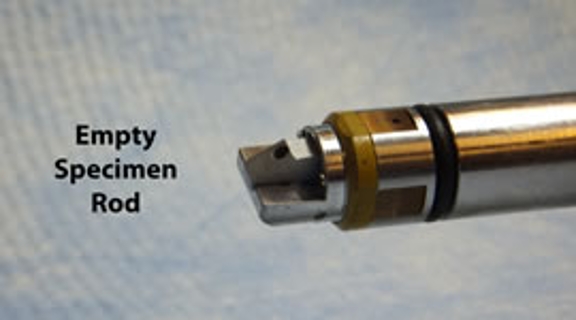
We have three identical JEOL specimen rods which are referred to as the "Common Specimen Holder," part EM-21010 (SCSH). Such specimen rods must be used with various JEOL "retainers" (the grid-holding attachment at the end of the rod). These specimen holders can be tilted around the x-axis (i.e., the long axis of the specimen rod) and the amount of tilt is limited only by the size of the gap in the polepiece of either our 1400plus or 3200FS and the width of an individual retainer. The smallest amount of tilt for any of the retainers seems to be ±15° and tilt ranges of at least ±60° are possible with some retainers and holders.
We currently have the following retainers:
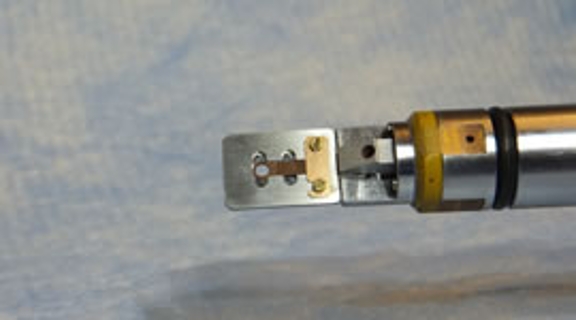
Standard Single Tilt Room Temperature Retainer (EM-21020)
This wide retainer is capable of tilting ±XX° in the 1400plus. This retainer should be used when recording data that does not require significant tilt. This holder is normally kept with the 3200FS and we currently try to keep a replica diffraction grating grid (a so called waffle grid, used for magnification calibrations) in this holder at all times. The EMC offers images showing the resolution that can be attained using this holder in the 3200FS both untilted and at the tilt limits.
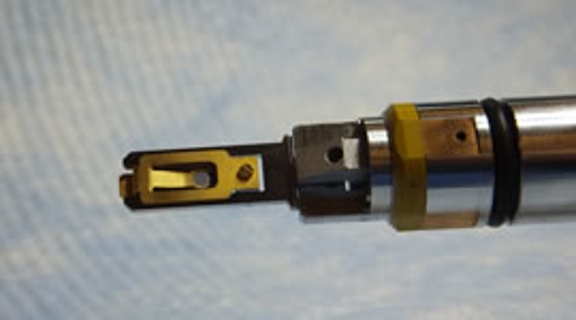
Quick Release Room Temperature Retainer (EM-11610 QR1)
This wide retainer is capable of tilting ±25° in the 1400plus. This retainer is quite easy to load (an image of the open holder can be found here) and should be used when recording data that does not require extreme tilt. This holder is normally kept with the 1400plus and is the first specimen holder that people will learn to use when training on the 1400plus starts. We offer images showing the resolution that can be attained using this holder in the 3200FS both untilted and at the tilt limits.
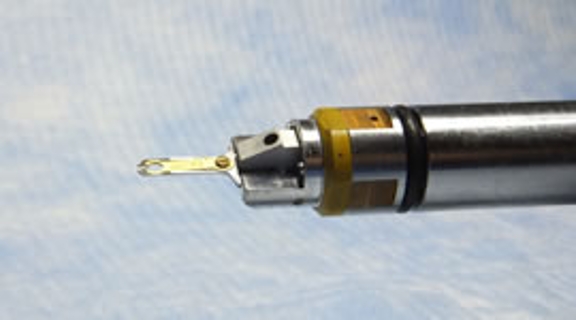
High Tilt Room Temperature Retainer (EM-21311 HTR)
This very narrow, high tilt retainer is capable of ±YY° tilt in the 1400plus. This holder normally stays with the 3200FS. It is one of the easiest of the holders/retainers to use. It will be the holder that most users initially learn to load when using the 3200FS. However, because of the narrow construction of the blade that holds the grid, it is easy to damage (bend) this holder or the copper piece that clamps the grid into place, and users need to be aware that significant damage can be done to the holder. We offer images showing the resolution that can be attained using this holder in the 3200FS both untilted and at high tilt.
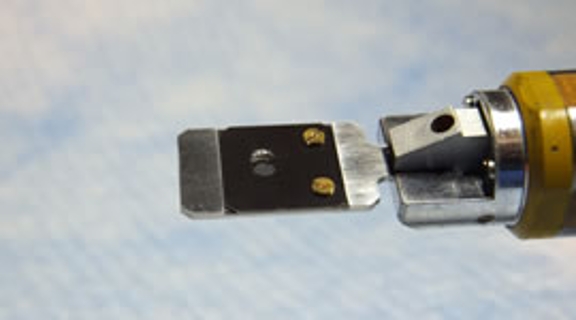
Single Tilt Beryllium Room Temperature Retainer (EM-21150)
This wide tilt retainer is capable of ±30° tilt in the 1400plus. It is intended to be used in situations where the low X-ray signal from the Be surrounding the grid allows users to see elements in a given sample that would be lost in the EDX signal from the other room temperature holders. Though the holder parts visible are made from beryllium, the underside of the plate that locks a grid in place seems to be plated with gold, and there are likely to be gold peaks in some of the EDX spectra recorded using this holder even when the specimen does not contain any gold. This holder is harder to load than the standard room temperature holder and the HTR, but not as difficult as the dual tilt beryllium holder described below. We offer images showing the resolution that can be attained using this holder in the 3200FS both untilted and at the tilt limits.
NOTE: Beryllium (especially any BeO dust) is toxic and extreme care should be taken when handling the single tilt beryllium holder.

JEOL Specimen Quartet Holder (EM-01070 SQH)
This specimen holder is capable of holding up to four grids at the same time and has a mechanism built into the opposite end from where the grids are clamped into position that allows the user to select which grid is in the electron beam. This holder is normally kept with the 1400plus. It is wide like all the previous retainers (except the very narrow high tilt retainer) and can be tilted ±15° tilt in the 1400plus. This holder currently stays with the 1400plus. Each of the 4 black clamps operates independently and additional images showing how the holder extends and how the clamps open are here. We offer images showing the resolution that can be attained using this holder both untilted and at the tilt limits.
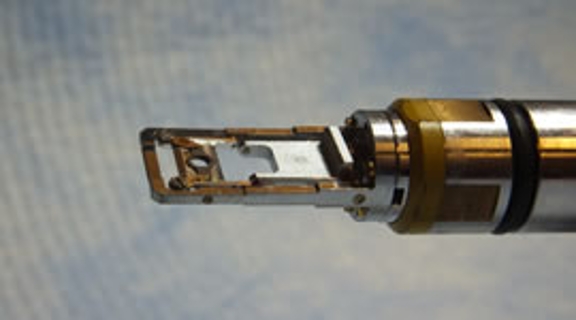
JEOL Dual Tilt Beryllium Holder (EM-31640 STHB)
This dual tilt holder is ideal for situations where the user needs to orient a crystalline specimen along exact zone axis views (for example, electron diffraction or STEM zone axis imaging). This holder is normally kept with the 3200FS. It has a width similar to the standard room temperature holder described above and is thus limited to ±XX° tilt around the x-axis in the 1400plus. The 1400plus's pole piece and the tilting mechanism of this holder also allow for ±YY° around the y-axis (where + y-tilt means the edge of the grid nearest the holder's tip tilts "down" when the holder is inserted into the column). In addition to these tilting capabilities, the area immediately surrounding the grid is made from beryllium and thus presents a very low background signal for EDX. However, it should be noted that there may be a small but measurable gold signal in the EDX spectra obtained using this holder: while most of the area surrounding the grid is beryllium, there is a bit of gold also and under some conditions, X-rays from this gold can appear in the EDX spectrum.
NOTE: Beryllium (especially any BeO dust) is toxic and extreme care should be taken when handling the dual tilt beryllium holder.

Fischione Dual Axis Tomography Holder (Model 2040)
This holder is designed for room temperature work with negatively stained specimens or plastic embedded and sectioned material where multiple axis tomography is desired. It is normally kept with the 3200FS. The Fischione 2040 holder operates similarly to a conventional tilt and rotation holder:image of Fischione tomography holder - specimen area the narrow tip of the rod allows for ±60° tilt around the x-axis while the large knob at the opposite end of the holder allows the user to rotate the grid through 360° or more (in the plane of the grid). However, when the small knob on the side of the large knob is tightened into position, the user can rotate the grid by precisely 90° simply by turning the large knob from its current position to the next position (in either direction) where the knob "locks" into place. In addition, the cut-down sides at the tip of the rod provide for a large viewing area even at high tilt. We offer additional images showing the resolution that can be attained using this holder in the 3200FS both untilted and at its maximum tilt.
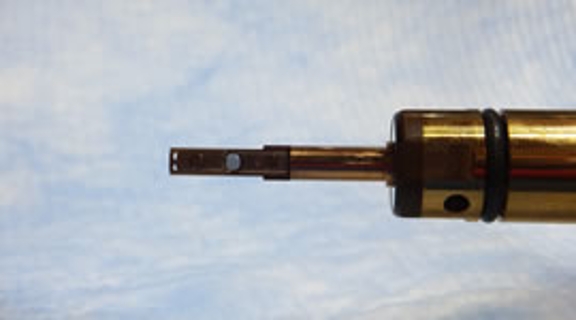
Although this holder was designed with biological imaging in mind, there is no reason that it cannot be used for TEM (and STEM) tomography of materials science specimens. The ability to rotate the grid freely while also tilting well beyond the limits of the dual tilt beryllium holder should also make this holder useful for materials science applications when it is desirable to tilt a materials science specimen both beyond the ranges available using the JEOL dual tilt beryllium holder listed above and along specific zone axis views.
ProtoChips Poseidon Select liquid cell holder
Images and description coming soon!
Gatan Model 626 Cryo-Holder
This holder is the EMC's workhorse cryo-holder and is the holder that everyone should use for almost all cryoTEM applications. The only cases where the Gatan 914 cryo-holder (see below) should be used are when doing cryo electron tomograpphy (cryoET) or when using either a random conical tilt or an orthogonal tilt data collection scheme for a frozen, hydrated specimen. This holder has a tilt range of ±XX° in the 1400plus. We offer images showing the resolution that can be attained using this holder in the 3200FS both untilted and at its maximum tilt. In addition to these resolution tests (which are repeated whenever there is some question about the 626's performance), we monitor at rather infrequent intervals the cooling rate of the holder while in the dry pumping station. This is done to assure us that the holder is performing "as usual."
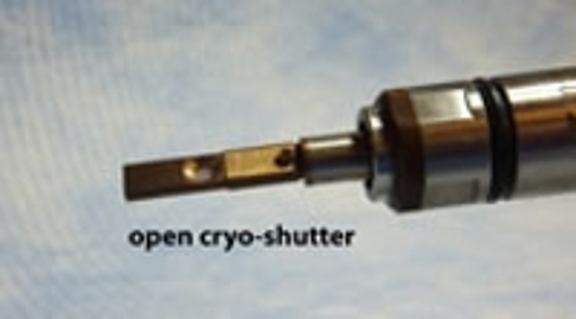
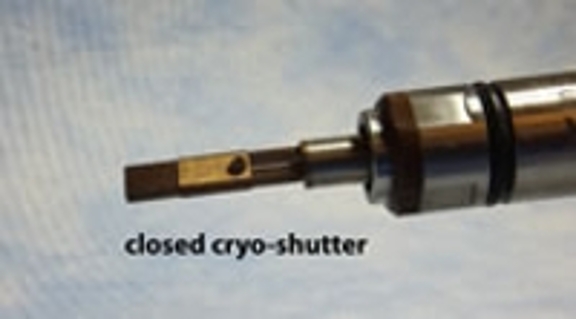
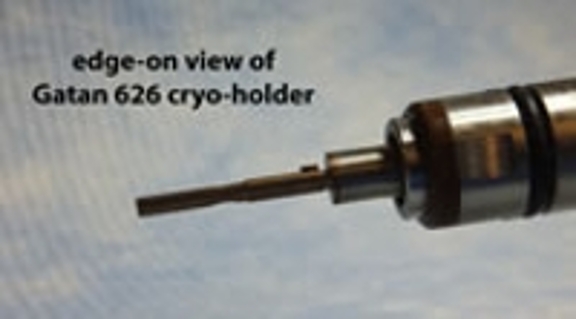
Gatan Model 914 Cryo-Holder (high tilt for tomography)
This cryo-holder is more difficult to load (practicing multiple times before the first real use is strongly suggested) and easier to damage than the 626 holder, and should only be used when it is necessary to tilt the specimen beyond ~30°. One reason it is more useful for tomography than the Gatan 626 cryo-holder is that the sides of the region that holds the grid have been cut down to allow the beam to expose the grid without being blocked by the side of the holder. We offer images showing the resolution that can be attained using this holder in the 3200FS both untilted and at its maximum tilt. In addition to these resolution tests (which are repeated whenever there is some question about the 914's performance), we monitor at rather infrequent intervals the cooling rate of the holder while in the dry pumping station. This is done to assure us that the holder is performing "as usual."
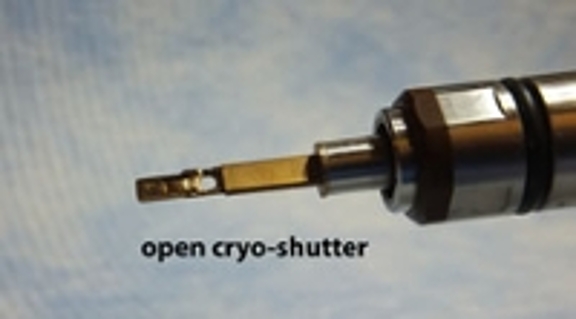
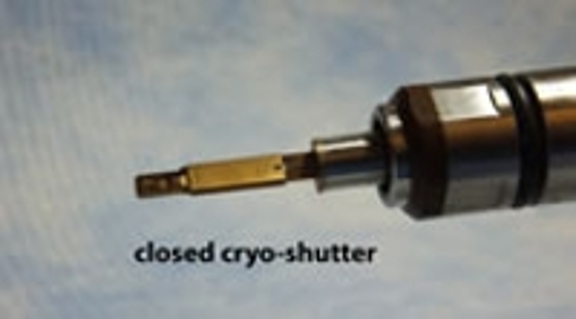
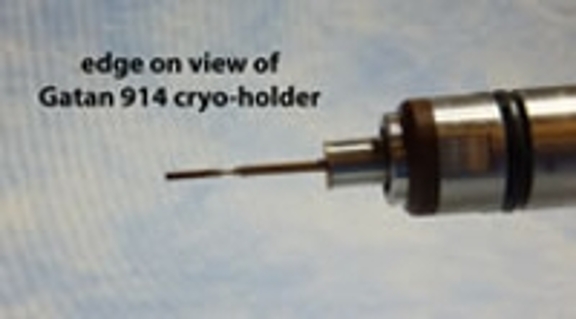
We also have a Gatan model 655 Dry Pumping Station equipped with two holder mainfolds for storing any of the holders that fit the 1400plus or the 3200FS. For the most part, we store both the cryo-holders in the manifolds.


